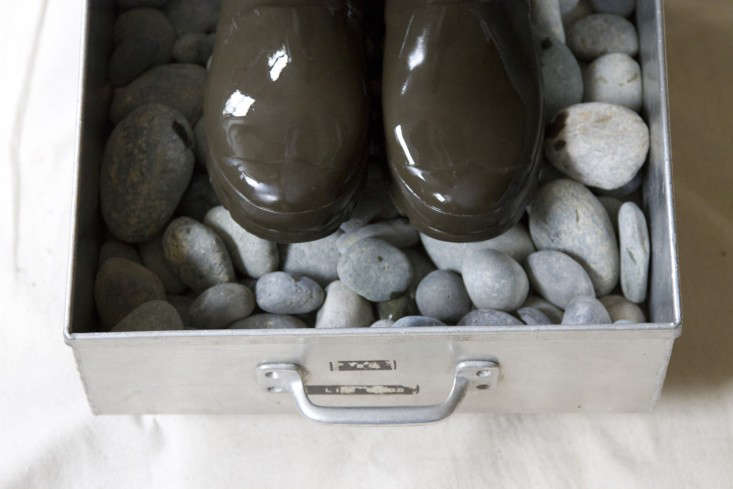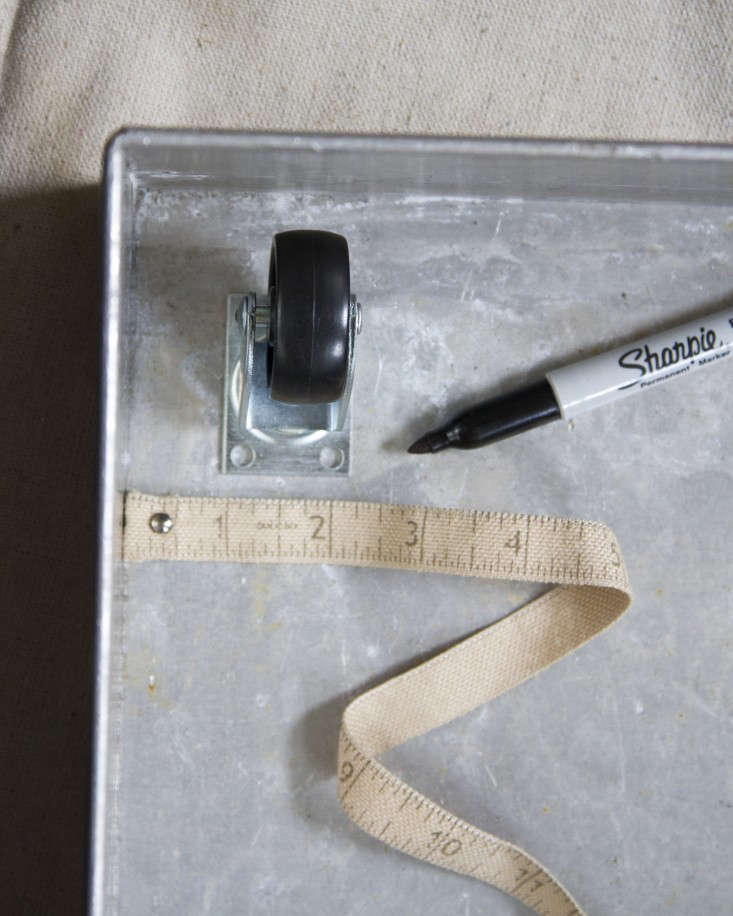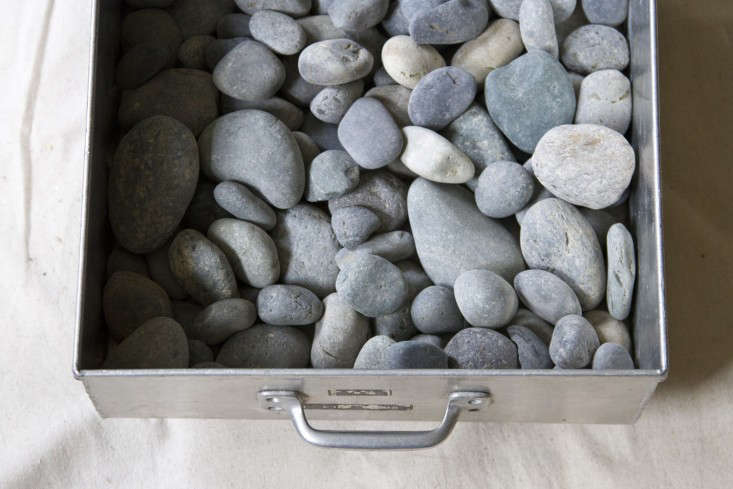
Even if you’re lucky enough to have a designated mudroom, a pair of wet and muddy boots can quickly make the space live up to its name in a not-so-good way. Here’s a solution for the mud-averse: a metal tray filled with beach stones where wet shoes can drain without making a mess. It’s on wheels, so you can roll it out of sight in a small space.
Read on for materials and step-by-step instructions:
Photography by Erin Boyle for Gardenista.

Materials
- 1 metal box (I used a vintage airplane drawer; a similar rectangular Galvanized Metal Trays is $39.50 from Pottery Barn)
- 4 1-1/4-inch Casters; $2.39 each from Home Depot
- 16 Round-Head Machine Screws; $5.60 for a pack of 100 from Home Depot
- 16 Machine Screw Nuts; $1.18 for 12 pieces from Home Depot
- 32 3/8-inch Zinc-Plated Flat Washers; $3.14 for 25 pieces from Home Depot
- Mexican Beach Pebbles; $25.99 for 0.5 cubic feet from Home Depot
- Drill
- Marker
- Measuring tape
- Scrap piece of 2-by-4 lumber






N.B.: If you don’t want to drill, you can make a simpler, non-rolling version of this boot tray by filling a low-sided jelly roll pan with a layer of rocks. An Uncoated Large Jelly Roll Pan measuring 16 3/4 by 12 inches is $14.44 at Amazon.


Are you the market for a new pair of garden shoes? See 10 Easy Pieces: Garden Clogs and Ankle Boots. Does your lackluster mudroom need sprucing? Get inspired with Storage: Entryway and Mudroom Roundup on Remodelista.
For more small-space DIY projects, see:






Have a Question or Comment About This Post?